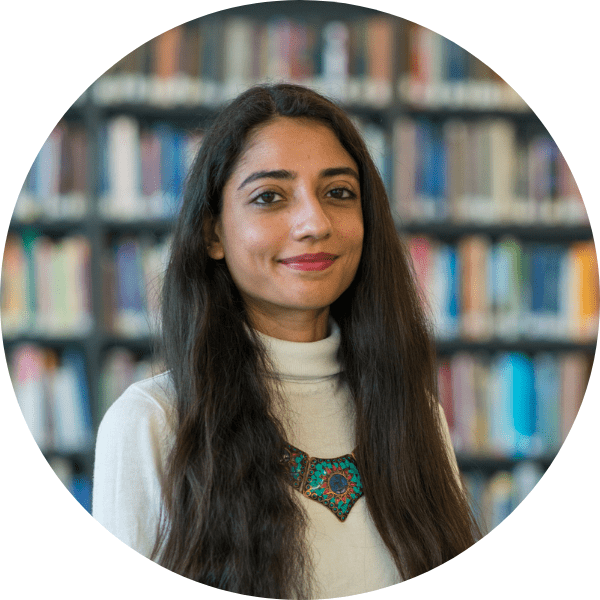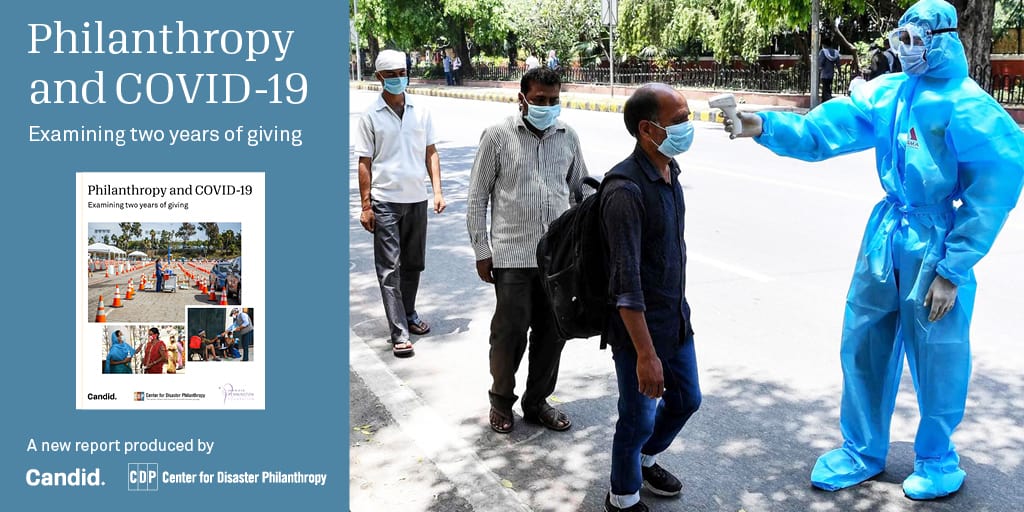3 mins read
The second year of the coronavirus pandemic began optimistically with the promise of multiple, effective vaccines. However, 2021 proved to be a challenging and complex year. Vaccines were readily available in wealthy nations, but other parts of the world were left behind, enabling the virus to spread and mutate. The pandemic was not just a public health emergency; it also continued to put pressure on economies and societies, exacerbating inequities and hitting poorer, historically marginalized communities the hardest. Ever-changing government rules and lockdowns caused frustration and fatigue. Through it all, nonprofits continued to play an essential role, providing critical services, trusted information, and other resources.
Candid and the Center for Disaster Philanthropy (CDP) released a new report, Philanthropy and COVID-19: Examining two years of giving, that details COVID-19-related philanthropic funding in 2021. Candid and CDP’s third assessment of COVID-19 philanthropic data notes a concerning decline in giving by large U.S. foundations even as communities face decades-long efforts to recover from the pandemic. The new report highlights the need for more philanthropic support for long-term recovery, and CDP provides actionable steps funders can take to invigorate their COVID-19 giving strategy, including:
- Increase support to marginalized communities
- Provide flexible funding to grantees
- Implement trust-based philanthropy
- Fund as locally and grassroots as possible
- Commit to transparency by sharing grants data with Candid
In previous reports, CDP and Candid noted the record amount of disaster-related funding for the pandemic. The new report includes analysis of Candid’s coronavirus data set (as of December 15, 2021) to illuminate funding trends among U.S. foundations, corporations, and high-net-worth individuals. To date, Candid has recorded $1 billion for COVID-19 in 2021. Additional key findings from the report include:
- 18% of COVID-19 funding was explicitly designated as flexible funding or general support
- 17% of funding was coded for policy, advocacy, and systems change
- Health, human service, and education organizations received the highest shares of funding
- U.S. donors allocated 22% of funding dollars to recipients based outside the United States
- For U.S.-focused domestic funding, 27% of dollars was explicitly designated for racial and ethnic identities. Of this, 71% didn’t indicate a specific identity, but instead, was broadly designated for “racial equity” or “communities of color.
This report also examines data from Candid’s Foundation Giving Forecast Survey, which surveys large U.S. foundations about their grantmaking. This year’s survey asked respondents about their total grant payments in FYE 2020 and 2021 and also sought to find out how much of this funding was specifically for COVID-19-related support. Results show:
- An 11% increase in overall grantmaking, but a 31% decline specifically for COVID-19-related funding in FYE 2021
- Corporate foundation funding for COVID-19 decreased by 76%; community foundations’ funding decreased by 43%; and funding by independent foundations decreased by 24%
- COVID-19 funding accounted for 7% of total giving in FYE 2021, compared to 12% in FYE 2020
To illustrate funding flows outside the U.S., country and regional experts described the philanthropic response in their localities. The report presents snapshots of COVID-19 funding in 11 countries, including case studies of how philanthropy responded to the crisis in India, Brazil, and Ukraine.
It will take decades for many communities to recover from the compounding effects of the pandemic. Funders will continue to play an important role in shaping an equitable, holistic recovery. The coronavirus pandemic has proven CDP correct that all funders are disaster funders. It’s time the sector took CDP’s recommendations to heart.




















